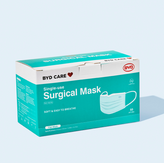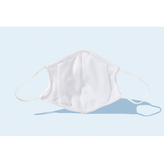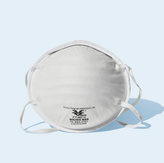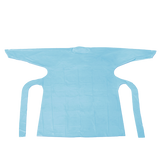Let’s get one thing out of the way: There is no shortage of N95s. There’s no lack of supply for healthcare workers, and there are even enough N95s in the market for all industrial users — even consumers.
So, why are we still coming across headlines lamenting a continued scarcity of N95s? In the last few months, The New York Times, The Washington Post, and NPR have all suggested that the so-called shortage is afoot. Not to mention, we’re still seeing photos of healthcare workers putting their N95s in Sharpie-labeled doggie bags for reuse. Ultimately, it comes down to an issue of perception driven by money, distrust, and anxiety.
Here are the nine reasons why folks feel like N95s are in short supply — and why consumer access remains restricted, even when there are plenty to go around:
1. Procurement policies. Healthcare procurement departments typically only purchase Surgical N95s — meaning N95s that meet three criteria. First, they are NIOSH-approved respirators. Second, they test to 160 mmHg splash resistance, according to the ASTM F1862 test standard. Third, they have obtained FDA 510k approval. Functionally, this means the respirators filter 95% of particulates, and they’ll continue to work if they get splashed. In a respiratory pandemic where the threat is primarily airborne, fluid resistance is perhaps less critical. However, hospitals strongly prefer Surgical N95s for regulatory and operational reasons — you can’t go wrong buying what’s FDA approved, and it’s more efficient to standardize one product of a higher spec for universal use.
2. Brand preferences. It’s no secret that 3M has the strongest brand recognition in the Western market. Buyers know and love 3M respirators. Institutions have fit tested 3Ms, making them confident in their quality. The only challenge is scarcity. While 3M has increased its production capacity, the majority of it isn’t focused on Surgical N95s (think: the 1860), but rather Standard N95s (principally the 8210). Meanwhile, the government has first dibs on 3M production following the application of the Defense Production Act.
3. Distributor allocations. Manufacturers may not be allocating enough to traditional healthcare suppliers to satisfy their end customers — who have procurement policies and brand preferences that aren’t subject to change on a whim. But due to the increased demand, distributors may not be getting the allocations they want for traditional brands.
4. Fit. If there is a shortage of any N95 today, it’s for smaller-sized Surgical N95 respirators. Overnight, the healthcare industry went from being considered a niche part of the market to being the primary market for N95s. There are more women in healthcare than, say, construction, and women tend to have smaller faces than men. Manufacturers have responded to this mix of demand, but it takes time to fully convert production lines. It took Makrite until September to change it’s allocation of size smalls in 9500 production from 10% to 50%.
5. Budgets. Like so many institutions, hospitals are having budget challenges. Revenue is down because they’ve canceled elective procedures, while costs for equipment (and yes, PPE) are way up. An N95 used to cost less than $1. Today, a single mask costs between $2-$3 (down from $5+ in the spring). The catch is that hospitals also need to buy more N95s, since entire departments are now required to wear N95s. Baystate Hospital in Springfield, Massachusetts, reported N95 usage had grown 15x since the start of the pandemic. To stretch their budgets, healthcare practitioners have made use of decontamination, like Batelle, which is a practical but imperfect solution, as mask performance declines with each sterilization cycle — possibly affecting safety.
6. Reuse Normalization. What healthcare workers may consider a “lack of PPE” may be considered a “perfectly acceptable” supply of PPE in the eyes of their supply chain team. Reuse of disposable PPE accounts for much of the difference in these views. Pre-pandemic, healthcare workers disposed of N95s after a single use. Following the extreme shortage in the spring, healthcare workers adopted a variety of life-extension techniques for their N95s: baking them in the oven, sterilizing them in an autoclave, leaving them for a few days in a brown paper bag, and now Batelle decontamination. Disposable N95s aren’t meant to be used in these ways, yet these behaviors were quickly normalized out of necessity.
7. Trust. When N95s from 3M, Honeywell, and other brands became unavailable, the only available supplier was China-produced NIOSH respirators (not to be confused with KN95s). Obtaining them was tricky. Typically, buyers might work with a distributor to vet the factory, do quality control, and move the goods. But due to supply constraints during the pandemic, buyers started to entertain new suppliers: a mixed bag of long-time supply chain professionals, disaster relief professionals, but also opportunists and brokers looking to make a buck without doing their due diligence. Now, this varied supply is languishing in warehouses throughout the US. As buyers cannot tell the good from the bad nor the real from the fake, there is a dual reality of excess supply and unmet demand.
8. Stockpiling. From federal and local governments to healthcare facilities and companies, it seems like everyone started building PPE stockpiles in April. This means the vast majority of N95s have gone to warehouses rather than to end users.
9. Retail deplatforming. The real shortage is in consumer demand for N95s. Many retailers refuse to sell N95s because of the legal and PR implications that arose in the spring, as well as the continued perception that N95s are in short supply. As a result, popular eCommerce and retail platforms refuse to list or actively delist legitimate vendors and products. Today, healthcare is fully supplied (perhaps with the exception of smaller-sized Surgical N95s), and there are many, many options of Standard N95s that can be made available to the general public.
It bears repeating: There is no shortage of N95s. Production has increased around the globe, and there is even latent capacity in some overseas NIOSH factories. So, the perception of scarcity isn’t a production problem. It’s a problem of budgets, allocation, perception, and other market access barriers.










